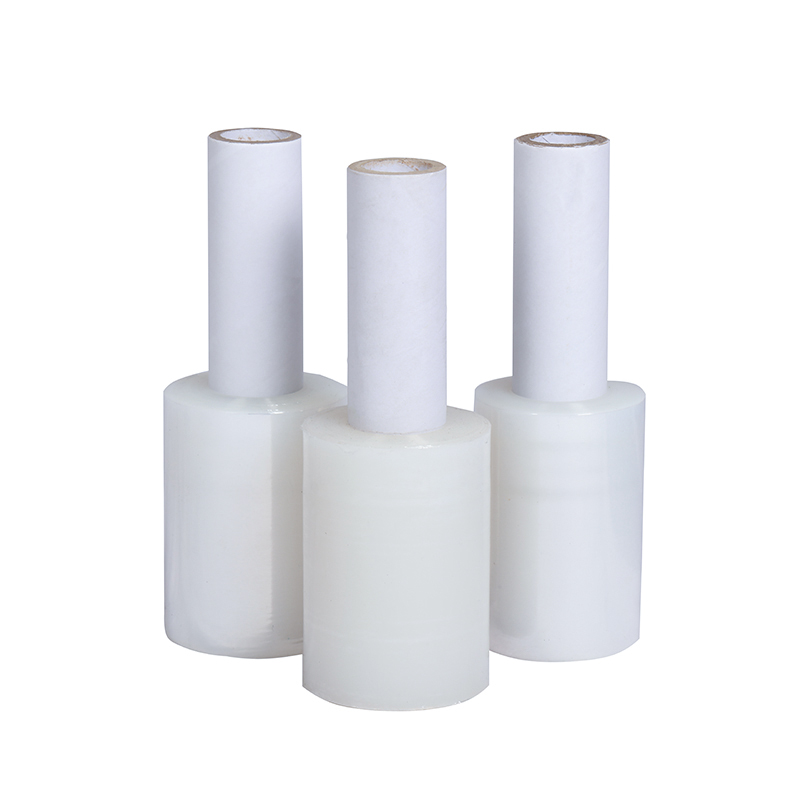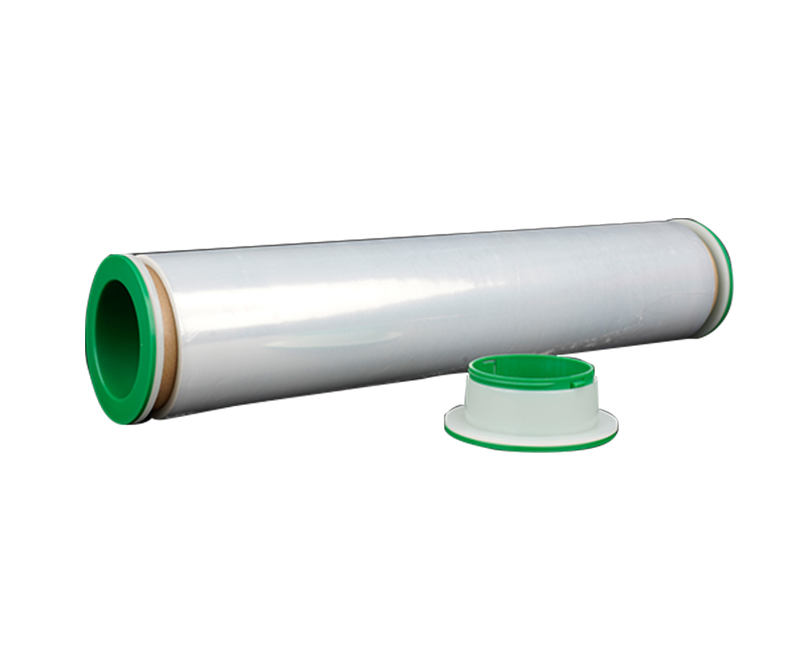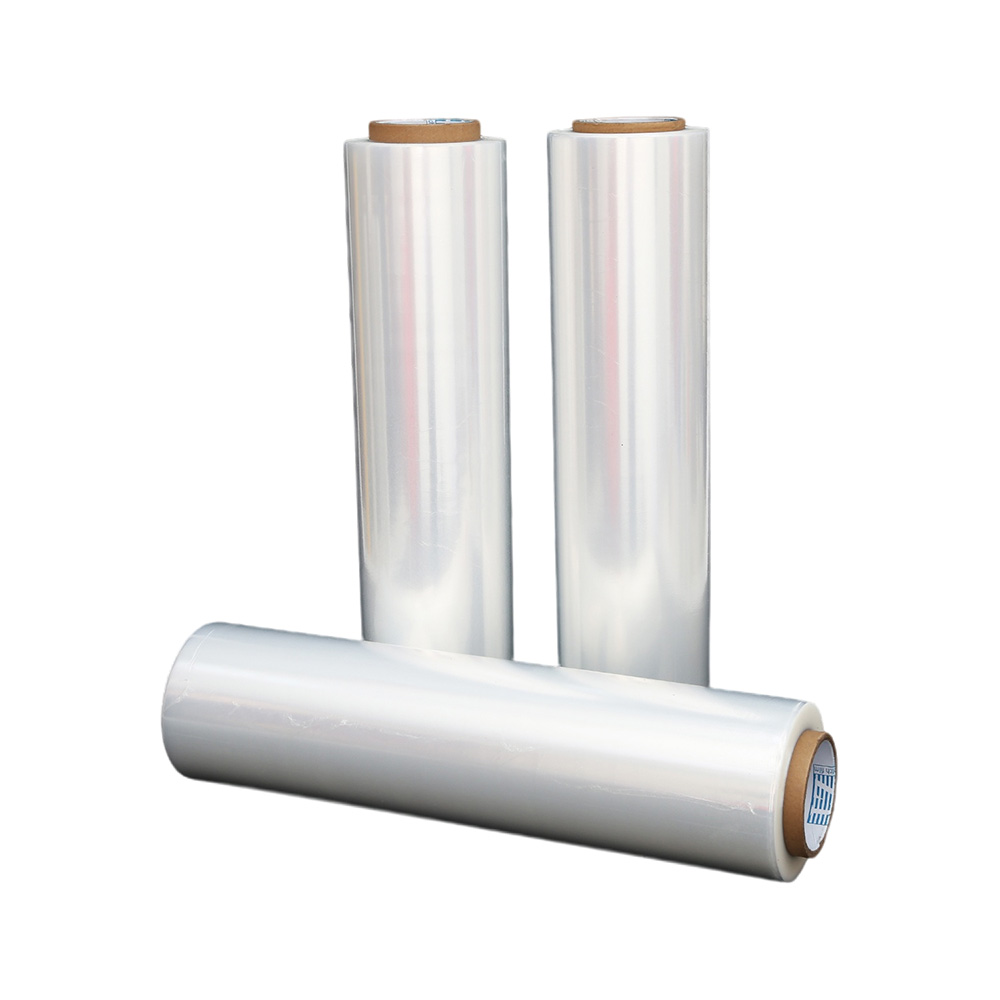Hand vs. Machine Stretch Wrap: Your Guide
Source:Hand vs. Machine Stretch Wrap: Your GuideTime:2025-08-30Visitors:
For businesses in shipping and logistics, securing palletized goods is critical to preventing damage and ensuring smooth, efficient operations. But choosing the right stretch wrap can be a challenge. Hand stretch wrap and machine stretch wrap both stabilize pallet loads, but they differ greatly in application, efficiency, and material properties. Making the wrong choice can lead to wasted time, higher costs, or inadequate protection for your goods. Understanding the differences between these two options will help you select the most cost-effective and productive solution for your specific needs, boosting efficiency while minimizing risks.
Choosing between hand stretch wrap and machine stretch wrap is crucial for businesses in logistics and shipping. Both types serve to stabilize palletized loads, but they differ in terms of application, material strength, and efficiency. Hand stretch wrap is ideal for smaller or irregular loads and offers flexibility in handling, while machine stretch wrap is more suited for high-volume, automated packaging needs, providing consistency and greater speed. This article explores the pros and cons of each type to help you make an informed decision based on your specific operational needs.
- What is Hand Stretch Wrap?
- What is Machine Stretch Wrap?
- What Are the Key Differences in Application and Efficiency?
- How Do Their Material Properties and Performance Compare?
- What Are the Advantages and Disadvantages of Hand Stretch Wrap?
- What Are the Advantages and Disadvantages of Machine Stretch Wrap?
- Which Type of Stretch Wrap is Best Suited for Your Operations?
1. What is Hand Stretch Wrap?
Hand stretch wrap is a type of stretch film designed for manual application around palletized loads, typically by an operator walking around the pallet while applying tension to the film. It comes in lighter, smaller rolls that are easy for a person to manage, making it ideal for low-volume or sporadic wrapping needs without requiring specialized equipment.
Hand wrap is often used in smaller warehouses, retail environments, or for businesses that only ship a few pallets per day. Its simplicity of use makes it a flexible option for diverse environments.
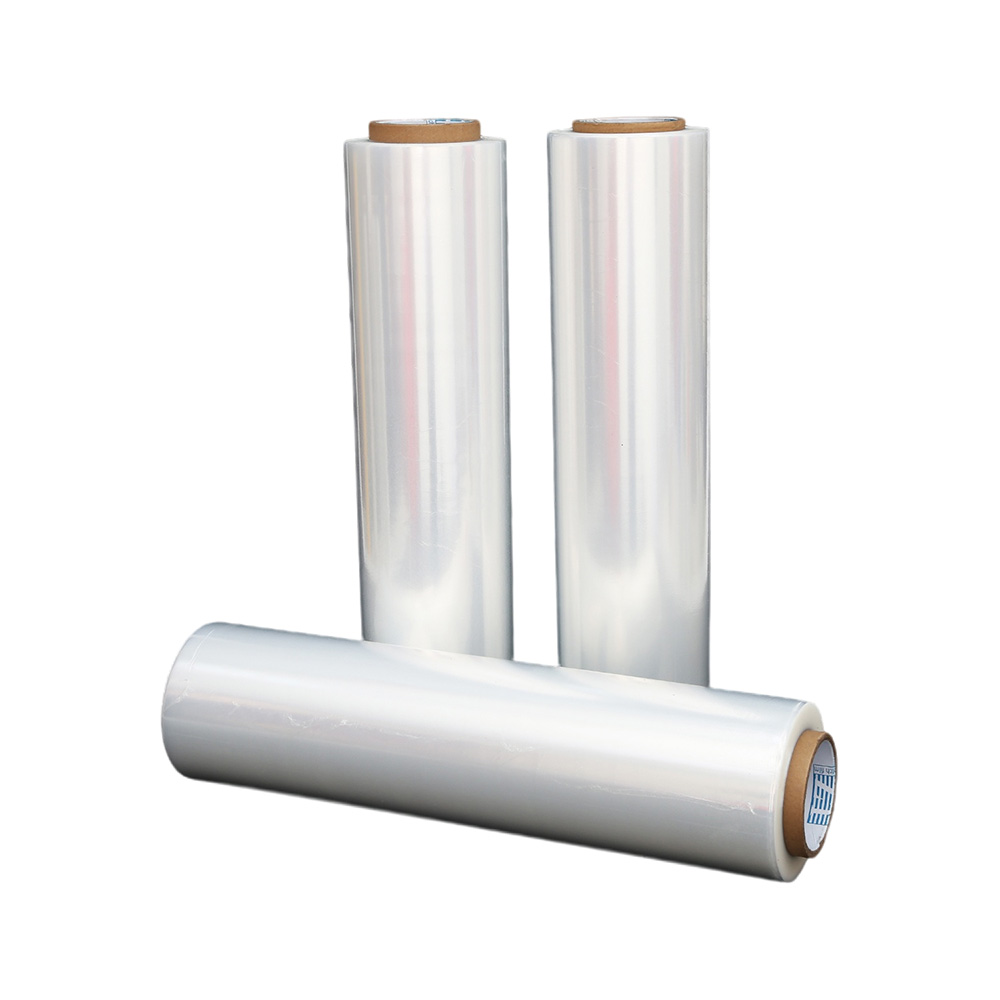
2. What is Machine Stretch Wrap?
Machine stretch wrap is a robust stretch film specifically designed for application by semi-automatic or automatic stretch wrapping machines, which mechanically stretch and apply the film around palletized loads. This method ensures consistent tension, high pre-stretch, and superior load containment, making it highly efficient for medium to high-volume operations.
Machine wrap typically comes in much larger, heavier rolls than hand wrap and is engineered to withstand the significant tension applied by the pre-stretch carriage of a machine, maximizing film yield and load stability.
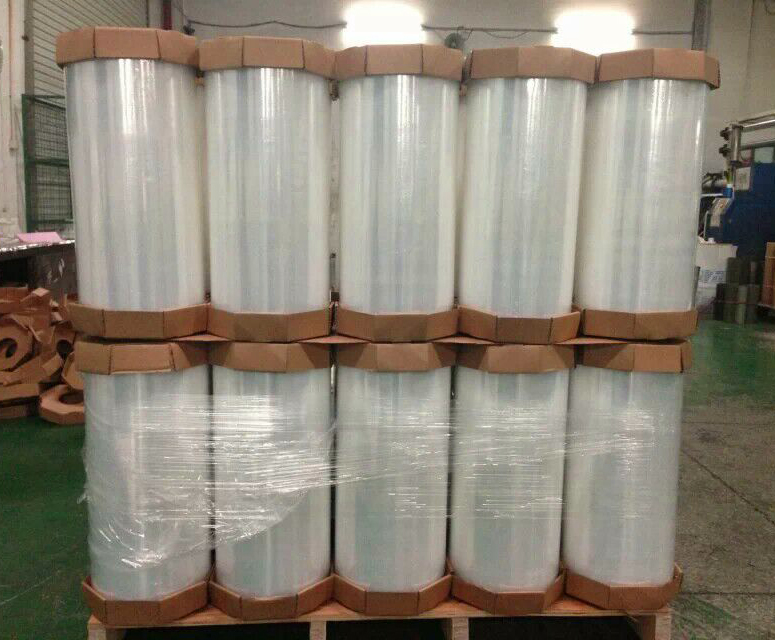
3. What Are the Key Differences in Application and Efficiency?
The primary differences between hand and machine stretch wrap lie in their application methods and the resulting operational efficiencies: hand wrap is manually applied by a person, while machine wrap is applied automatically or semi-automatically by specialized equipment. This distinction significantly impacts labor costs, speed, and consistency of the wrapping process.
4. How Do Their Material Properties and Performance Compare?
Hand stretch wrap is engineered for ease of manual handling with moderate stretch and puncture resistance, whereas machine stretch wrap is designed for extreme pre-stretch capabilities and superior strength to withstand machine tension and deliver optimal load containment. Their differing material properties are tailored to their respective application methods.
- Pre-Stretch Capability:
- Hand Wrap: Typically offers lower pre-stretch (e.g., 50-150%). Operators manually stretch the film, limiting how much it can be elongated.
- Machine Wrap: Designed for very high pre-stretch (e.g., 150-300%+). Machines can stretch the film significantly before applying it, maximizing yield and containment force.
-
Gauge (Thickness):
- Hand Wrap: Often sold in higher gauges (thicker film) to compensate for less inherent stretch and containment force, sometimes leading to higher material usage per pallet.
- Machine Wrap: Modern machine films, especially performance films, can achieve superior containment at lower gauges due to high pre-stretch.
- Tack/Cling: Both types have tack (inherent stickiness) to adhere to themselves, ensuring wraps bond together. Some hand films might have more aggressive tack to compensate for less tension.
-
Puncture & Tear Resistance:
- Hand Wrap: Good for general purpose, but can be limited by manual tension application.
- Machine Wrap: Engineered for higher puncture and tear resistance to endure machine stress and protect heavy/irregular loads.
-
Roll Size:
- Hand Wrap: Smaller, lighter rolls (e.g., 5-10 lbs) for easy manual handling.
- Machine Wrap: Large, heavy rolls (e.g., 30-50+ lbs) designed to be loaded onto a machine spindle.
5. What Are the Advantages and Disadvantages of Hand Stretch Wrap?
Hand stretch wrap's primary advantages include a low initial investment cost as no machinery is required, its portability for various wrapping locations, and its flexibility for low-volume or occasional use. However, its disadvantages involve lower efficiency, higher labor costs, inconsistent wrapping quality, and increased physical strain on operators.
Advantages of Hand Stretch Wrap:
- Low Initial Investment: No expensive machinery is needed, making it accessible for startups or small operations.
- Portability: Can be used anywhere, anytime, providing flexibility for wrapping in different areas of a facility or on job sites.
- Versatility: Suitable for odd-shaped or very light/fragile loads that might be challenging for some machines.
- Ideal for Low Volume: Perfect for businesses that wrap only a few pallets per day or week.
Disadvantages of Hand Stretch Wrap:
- High Labor Cost: Each pallet requires significant manual effort, leading to higher labor expenses per wrapped unit.
- Inconsistent Wrap Quality: Tension and overlap vary greatly between operators, potentially leading to unstable loads and increased product damage.
- Lower Efficiency: Slower wrapping speeds limit daily throughput, which can create bottlenecks in busy operations.
- Physical Strain: Repetitive motion can lead to operator fatigue, back injuries, and reduced productivity over time.
- Higher Film Cost per Pallet: Less pre-stretch means more film may be used per pallet to achieve adequate containment, increasing material consumption.
6. What Are the Advantages and Disadvantages of Machine Stretch Wrap?
Machine stretch wrap offers significant advantages in efficiency, consistency, and cost savings for medium to high-volume operations, providing superior load containment with less material per pallet. Its main disadvantages are the higher initial capital investment for the equipment and less flexibility for extremely diverse or scattered wrapping needs.
Advantages of Machine Stretch Wrap:
- High Efficiency & Throughput: Machines wrap pallets much faster and more consistently, significantly increasing daily output.
- Cost Savings (Material): High pre-stretch capabilities reduce film consumption per pallet, leading to substantial material cost reductions over time.
- Consistent Wrap Quality: Machines apply uniform tension and overlap, ensuring every load is wrapped identically for optimal stability and damage prevention.
- Reduced Labor & Injury: Minimizes manual effort and physical strain on operators, improving workplace safety and allowing staff to focus on other tasks.
- Superior Load Containment: Consistent, high tension provides excellent load stability, reducing product shifting and damage during transit.
- Increased Productivity: Frees up labor, allowing businesses to scale operations without proportionally increasing personnel for wrapping.
Disadvantages of Machine Stretch Wrap:
- High Initial Investment: Purchasing a stretch wrapping machine (semi-automatic or automatic) requires a significant upfront capital expenditure.
- Space Requirements: Machines require dedicated floor space within a warehouse or facility.
- Maintenance: Machines require regular maintenance to ensure optimal performance and longevity.
- Less Flexible for Diverse Locations: Not suitable for wrapping pallets in multiple, scattered locations within a facility without moving the machine or pallet.
- Not Ideal for Very Low Volume: For businesses wrapping only a few pallets per day, the ROI on a machine might not justify the initial cost.
7. Which Type of Stretch Wrap is Best Suited for Your Operations?
Choosing between hand and machine stretch wrap depends primarily on your daily pallet wrapping volume, available budget, desired efficiency levels, and the consistency required for your load containment. Machine wrap is generally superior for medium to high-volume operations seeking efficiency and consistency, while hand wrap suits low-volume or flexible needs.
- For Low-Volume (e.g., <15 pallets/day): Hand stretch wrap is often the most cost-effective solution due to its low initial investment and portability.
- For Medium-Volume (e.g., 15-50 pallets/day): A semi-automatic stretch wrapper with machine film often provides the best balance of efficiency, consistency, and a reasonable return on investment.
- For High-Volume (e.g., 50+ pallets/day): An automatic stretch wrapper with high-performance machine film is typically essential for maximizing throughput, material savings, and load stability.
Consider performing a "cost-per-pallet" analysis that factors in labor, film consumption, and potential product damage for both methods. This will often reveal that investing in a machine, even for moderate volumes, can lead to substantial long-term savings and operational improvements.
Conclusion
The decision between hand stretch wrap and machine stretch wrap is a critical operational choice that impacts efficiency, costs, and product safety. While hand wrap offers immediate cost savings and flexibility for low-volume, sporadic needs, machine wrap provides unparalleled efficiency, consistency, and material optimization for medium to high-volume operations. Understanding their distinct application methods, material properties, and respective advantages allows businesses to make an informed decision, selecting the stretch wrapping solution that best aligns with their operational scale, budget, and commitment to load integrity. Choosing the right tool ensures your goods arrive safely and cost-effectively, every time.
At Dongguan Zhiteng Plastic Product Co. Ltd., we are experts in providing comprehensive stretch film solutions tailored to your specific operational needs. With 17 years of experience in manufacturing high-quality films, we offer a diverse range of both hand stretch wrap for flexible, low-volume applications and advanced machine stretch wrap designed for optimal performance on automated systems. Our commitment to quality and innovation ensures we can help you choose the ideal film type and optimize your wrapping process, maximizing your load security and minimizing your packaging costs, regardless of your volume requirements.
Recommended Products
Ranked in the same article
- how to use the stretch film technology to r
- How can we get detailed price list?
- Five common quality problems of PE protecti
- Plastic film degradation
- How to guarantee punctual shipment for our
- Gauge to Micron and Millimetre Conversion G
- What is the difference between stretch film
- Testing the permeability of stretch film
- Stretch film temperature requirements
- Electrical wire film VS electrostatic film
- Why insufficient transparency of stretch w
Latest news articles
- How to check the quality of PE stretch film
- The 133rd Spring Canton Fair
- Factors affecting viscosity of PE stretch f
- Stretch Film Wrap: Unraveling Its Benefits
- How can PE stretch film be cut better?
- Bundling Stretch Film: Optimize Your Packag
- The significance of using PE electric wire
- The Ultimate Guide to Choosing the Right Ma
- What is the Difference Between Magic Tape a
- What Properties Ensure Effective Cold Chain
- Advantages of white engineering film

